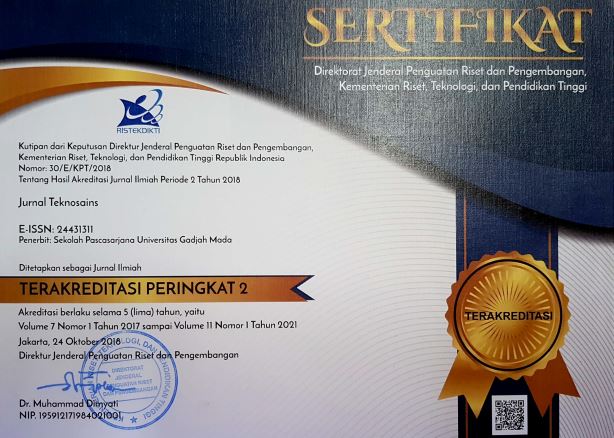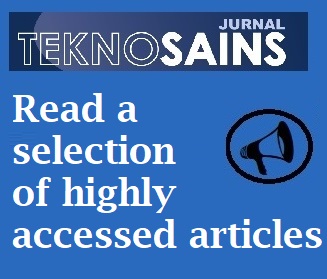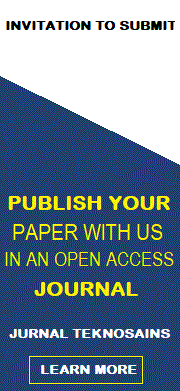EFFECT OF NON DENTAL GLASS FIBER ORIENTATION ON TRANSVERSE STRENGTH OF DENTAL FIBER REINFORCED COMPOSITE
Abdulghani Ali Khalil(1*), Widowati Siswomiharjo(2), Siti Sunarintyas(3)
(1) Faculty of Dentistry of Universitas Gadjah Mada
(2) Biomaterial Department, Faculty of Dentistry of Universitas Gadjah Mada
(3) Biomaterial Department, Faculty of Dentistry of Universitas Gadjah Mada
(*) Corresponding Author
Abstract
Keywords
Full Text:
PDFReferences
Abdulmajeed, A.A., Narhi, T.O., Vallitu, P.K., and Lassila L.V., 2011, The Effect of High Fiber Fraction on Some Mechanical Properties of Unidirectional Glass Fiber-Reinforced Composite. J. Dent. Materials. 27 : 313-321.
Anusavice, K.J., 2003, Philips' Science of Dental Materials. 11th. Elsevier Science. USA. 89- 144.
Butterworth, C. Ellakwa, A. E. and Shortall, A. 2003. “Fibre-reinforced composites in restorative dentistry,” Dental Update. 30(6):300-306. View at Scopus.
Hull, D. and Clyne, T.W. 1996. An introduction to composite materials. Cambridge University Press, Cambridge.
ISO 10477., 2004, Dentistry-Polymer-Based Crown and Bridge Materials. 2nd ed. International Organization for Standarization, Geneva, Switzerland.
Khan, A.S , Azam M. T , Khan, M. Mian,S.A. Rehman, I. Ur . 2015. An update on glass fiber dental restorative composites: A systematic review. Materials Science and Engineering C. Elsevier. 47:26–39.
Kim, S.H. and Watts, D.C. 2004. The effect of reinforcement with woven E-glass fibers on the impact strength of complete denture fabricated with high-impact acrylic resin. J Prosthet Dent. 91:274-80.
Loughran, G.M., Versluis, A. and Douglas, W.H. 2005. Evaluation of subcritical fatigue crack propagation in a restorative composite. Dent Mater. 21(3): 252-261.
Mallick, P.K. 2008. Fiber-reinforced composites: materials, manufacturing, and design, 3rd edn. CRC Press, Taylor & Francis Group, Boca Raton, FL.
Moshrraf, R., Givechian, P. Effect of fiber position and orientation on flexural strength of fiber reinforced composite. Journal of Islamic Dental Association of IRAN (JIDAI). 24 (1): 21-27.
Munoz, E., Manrique, J.A.G.2015. Water Absorption Behaviour and Its Effect on the Mechanical Properties of Flax Fiber Reinforced Bioepoxy Composite. International Journal of Polymer Science.1-10.
Starr, T.F. 1995. Carbon and High Performance Fiber, Directory and Databook, 6th ed, Chapman and Hall, London.
Tanwer. A.K. 2014. Mechanical Properties Testing of and Bi-directional Glass Fiber Reinforced Epoxy Based Composites. International Journal of Research in Advanced Technology, 2 (11): 34-39.
Tezvergil, A., Lassila, L.V.J. and Vallittu, P.K. 2003. The effect of fiber orientation on the thermal expansion coefficient of fiber reinforced composites. Dent. Mater. 19:471-477.
Unalan, F., Dikbas, I. and Gurbuz, O. 2010. Transverse Strength of Polymethylmethacrylate Reinforced with Different Forms and Concentrations of E-Glass Fibres. OHDMBSC. IX: (3): 144-147.
Uzun, G., Hersek, N. and Tincer, T. 1999. Effect of five woven fiber reinforcements on the impact and transverse strength of a denture base resin. J Prosthet Dent. 81: 616-20.
Van Heumen, C., Creugers, N.H.J. and Kreulen, C.M. 2010. Thesis Fiber-reinforced adhesive bridges-Clinical and laboratory performance. Chapter 1 Radboud Repository of the Radboud University Nijmegen. p1-14.
Article Metrics
Refbacks
- There are currently no refbacks.
Copyright (c) 2017 Abdulghani Ali Khalil

This work is licensed under a Creative Commons Attribution-ShareAlike 4.0 International License.
Copyright © 2024 Jurnal Teknosains Submit an Article Tracking Your Submission
Editorial Policies Publishing System Copyright Notice Site Map Journal History Visitor Statistics Abstracting & Indexing









